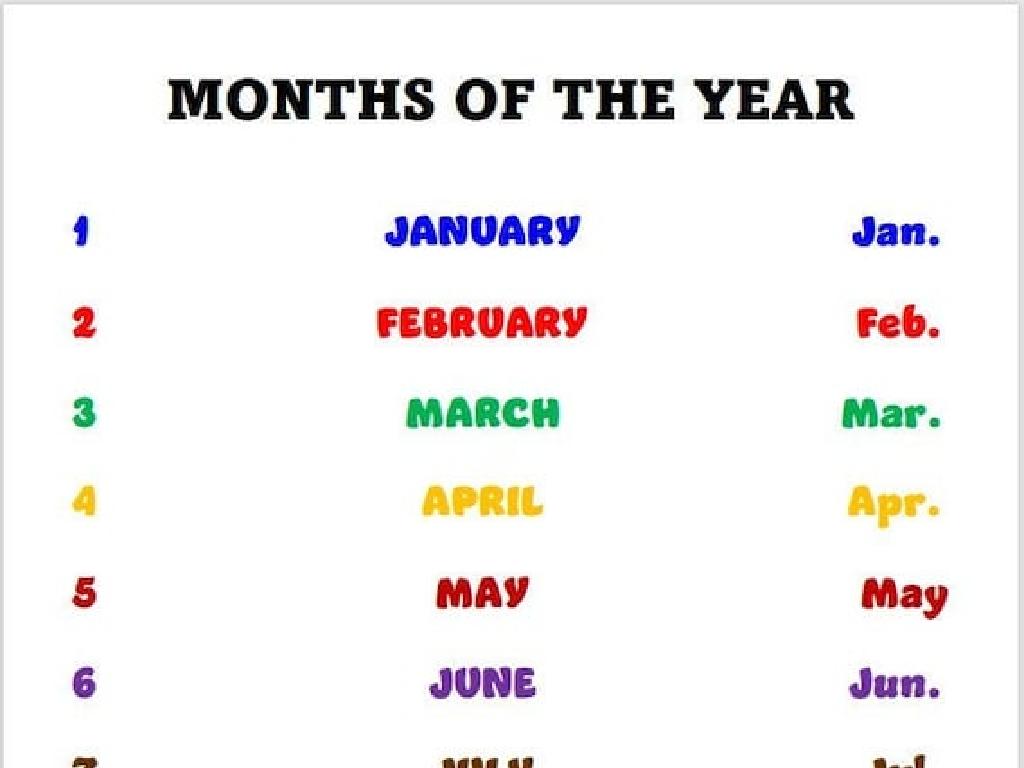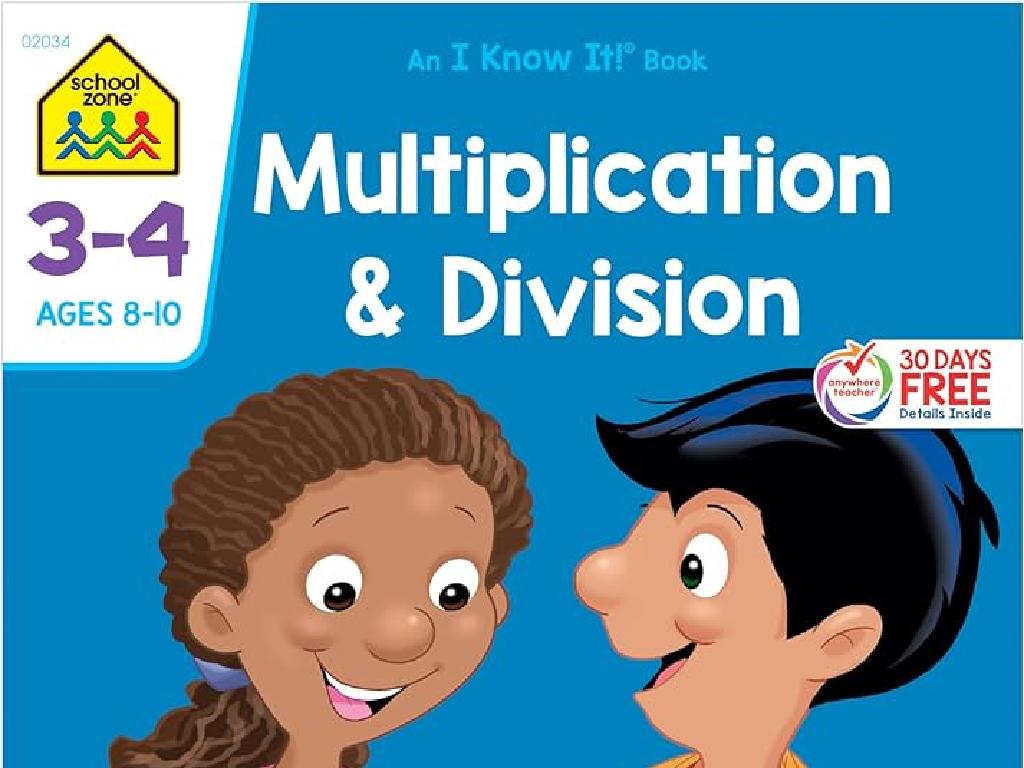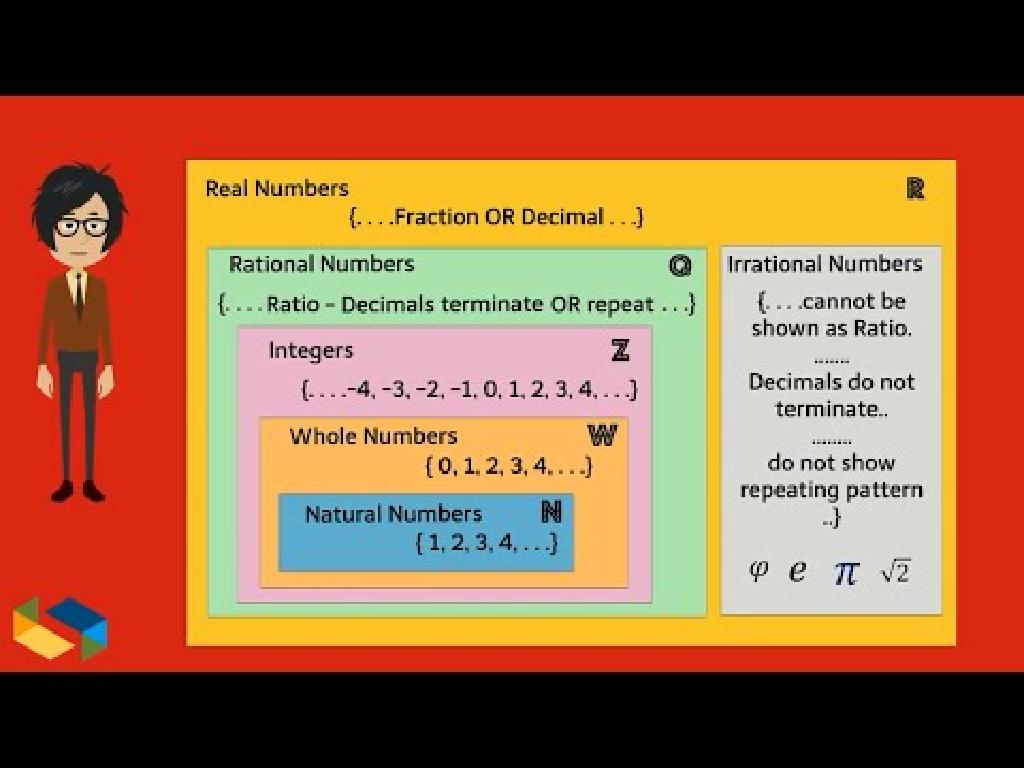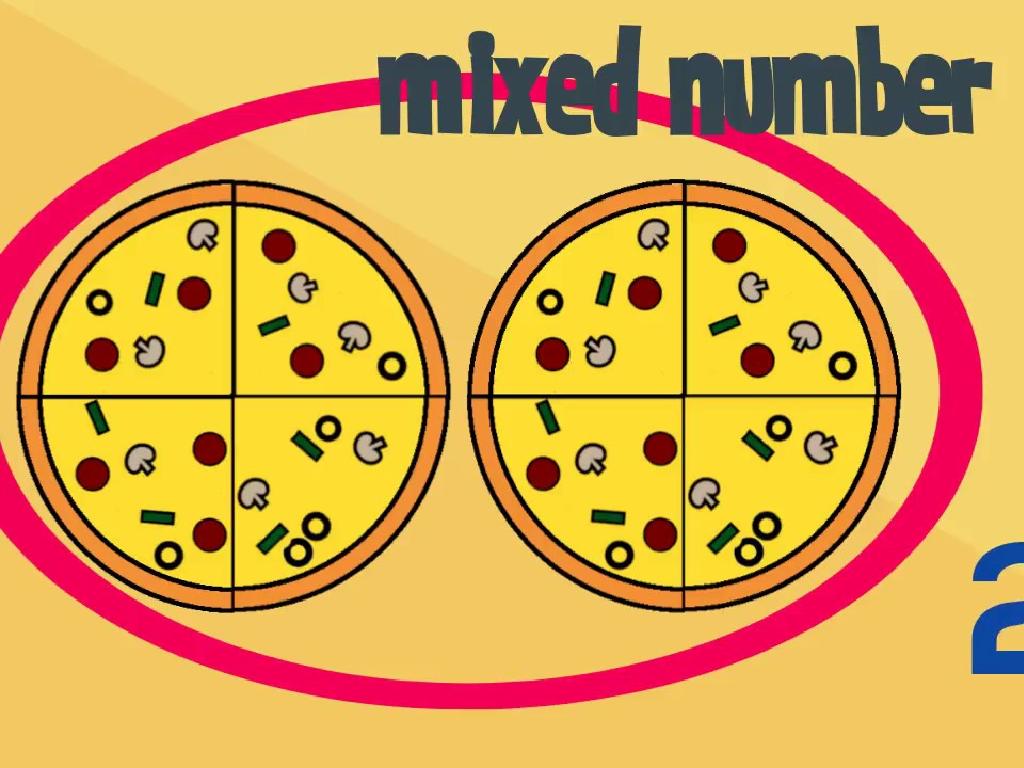Identify Prepositional Phrases
Subject: Language arts
Grade: Seventh grade
Topic: Prepositions
Please LOG IN to download the presentation. Access is available to registered users only.
View More Content
Welcome to Prepositions!
– Role of prepositions in sentences
– Prepositions link nouns, pronouns to other words
– Defining prepositional phrases
– A phrase starting with a preposition, ending with a noun/pronoun
– Significance of prepositional phrases
– They provide details about how, where, or when something happened
|
This slide introduces students to the concept of prepositions and their function in sentences. Prepositions are words that show the relationship between a noun or pronoun and other elements in a sentence, often indicating direction, time, or location. Prepositional phrases start with a preposition and end with a noun or pronoun, called the object of the preposition. Understanding prepositional phrases is crucial for students as they add context and detail to the sentences, enhancing both writing and comprehension skills. Encourage students to identify prepositional phrases in sentences and discuss how they modify the rest of the sentence. Provide examples and exercises to practice this skill.
Understanding Prepositions
– Define a preposition
– A word that shows the relationship between nouns/pronouns and other elements
– List common prepositions
– Examples: in, on, at, by, for, with, under, over
– Explain prepositions in sentences
– They link nouns/pronouns to time, location, direction, or other nouns
– Show relationships with examples
– ‘The cat is under the table’ shows the cat’s location relative to the table
|
This slide introduces the concept of prepositions to seventh-grade students, providing a foundation for understanding how prepositions function within sentences to express relationships. Start by defining a preposition and then provide a list of common prepositions for students to memorize. Use simple sentences to illustrate how prepositions connect nouns or pronouns to other words, conveying various types of relationships such as time, place, or direction. Encourage students to create their own sentences using the listed prepositions to reinforce their learning. Provide additional examples to clarify any confusion and ensure students grasp the concept of prepositional relationships.
Identifying Prepositions: Class Activity
– Find prepositions in sentences
– Connect prepositions to nouns/pronouns
– How does the preposition link to the noun or pronoun in the sentence?
– Understand prepositions’ roles
– Prepositions serve as bridges in sentences, showing relationships.
– Directions, time, location, method
– For example, ‘over the fence’, ‘during the show’, ‘at the park’, ‘by walking’
|
This slide introduces an interactive class activity focused on identifying prepositions and understanding their function in sentences. Students will practice finding prepositions within example sentences and discuss how these words connect to nouns or pronouns, providing clarity in the sentence structure. Emphasize the role of prepositions in indicating direction (over, under), time (before, after), location (at, in), or method (by, with). For the activity, provide sentences and have students highlight the prepositions and discuss their purpose. Encourage group work for this activity to foster collaborative learning. Possible activities include sentence construction, preposition charades, and creating a preposition poster. This will help students recognize and use prepositions effectively in their writing.
Exploring Prepositional Phrases
– Define prepositional phrase
– A phrase starting with a preposition, ending with its object
– Components of a phrase
– Includes the preposition, its object, and any modifiers
– Sentence examples
– ‘Under the table’, ‘over the rainbow’, ‘beside the river’
– Understanding their role
– They add detail to how, where, when, or why something happens
|
This slide introduces the concept of prepositional phrases to students, aiming to help them identify and understand the components and usage of prepositional phrases in sentences. A prepositional phrase begins with a preposition and ends with the object of the preposition, which can be a noun or pronoun. Modifiers may also be present to provide additional detail. Provide clear examples to illustrate how prepositional phrases function within sentences to describe relationships of time, location, direction, or condition. Encourage students to practice by identifying prepositional phrases in their reading or in provided sentences.
The Function of Prepositional Phrases
– Prepositional phrases as modifiers
– They act like adjectives or adverbs, providing details.
– Examples modifying nouns and verbs
– ‘Under the tree’ (adjective) modifies ‘the cat’ (noun); ‘ran through the field’ (adverb) modifies ‘the dog’ (verb).
– Contextual impact of phrases
– Phrases can alter a sentence’s meaning significantly.
– Activity: Identify in sentences
– Find and explain phrases in book excerpts.
|
This slide aims to teach students how prepositional phrases can function as adjectives or adverbs, providing additional details about nouns or verbs. Use clear examples to show how these phrases modify different parts of speech and how they can change the meaning of a sentence depending on their placement and context. For the class activity, students will identify prepositional phrases in sentences from book excerpts and explain their function. This will help them see the practical application of the concept and enhance their understanding of sentence structure.
Let’s Practice Prepositional Phrases!
– Create sentences with prepositions
– Find prepositional phrases in sentences
– Look for words like ‘under’, ‘over’, ‘between’, and ‘through’
– Group activity: Write a paragraph
– Collaborate to write a story or description
– Underline all prepositional phrases
– Highlight the role of prepositions in your writing
|
This slide is designed for a class activity to reinforce the concept of prepositional phrases. Students will start by individually creating their own sentences using a list of specific prepositions provided by the teacher. Next, they will practice identifying prepositional phrases within given sentences. For the group work, students will collaborate to write a short paragraph on a given topic, ensuring they include multiple prepositional phrases. They will then underline or highlight these phrases in their paragraph. The teacher should circulate the room, providing guidance and ensuring that each group understands the task. Possible activities could include writing a descriptive paragraph about a place, a narrative that includes directions, or a story that focuses on the position of objects. The goal is for students to recognize and effectively use prepositional phrases to add detail to their writing.
Class Activity: Prepositional Phrase Hunt
– Find prepositional phrases in a text
– List each phrase you discover
– Share your phrases with the class
– Discuss their role in the text
– How do these phrases add detail and clarity?
|
This activity is designed to help students identify prepositional phrases within the context of real texts. Students should choose a book or an article and look for phrases that begin with prepositions and include a noun or pronoun. They will make a list of the prepositional phrases they find and then share their lists with the class. After sharing, lead a discussion on how these phrases function to add detail, show relationships between ideas, and enhance the overall understanding of the text. Possible activities: 1) Students can work in pairs to find phrases. 2) Create a classroom chart of prepositional phrases. 3) Have students write sentences using the phrases they found. 4) Students can illustrate the relationship shown by the prepositional phrases. 5) Encourage students to find the most unique or complex prepositional phrase.
Wrapping Up: Prepositions & Homework
– Recap: What are prepositions?
– Prepositions link nouns, pronouns and phrases to other words in a sentence.
– Homework: Craft a short story
– Write a creative story and use prepositional phrases to add detail.
– Highlight prepositional phrases
– Use different colors to underline or highlight each phrase in your story.
– Remember: Practice is key!
|
As we conclude today’s lesson on prepositions, remind students of the role prepositions play in providing additional context and detail in sentences. For homework, students should write a short story, aiming to creatively incorporate prepositional phrases that they’ve learned. Encourage them to identify these phrases by highlighting or underlining them, which will help reinforce their understanding. Emphasize the importance of regular practice in mastering the use of prepositional phrases. In the next class, be prepared to discuss some of the stories and the prepositional phrases used to enhance them.






